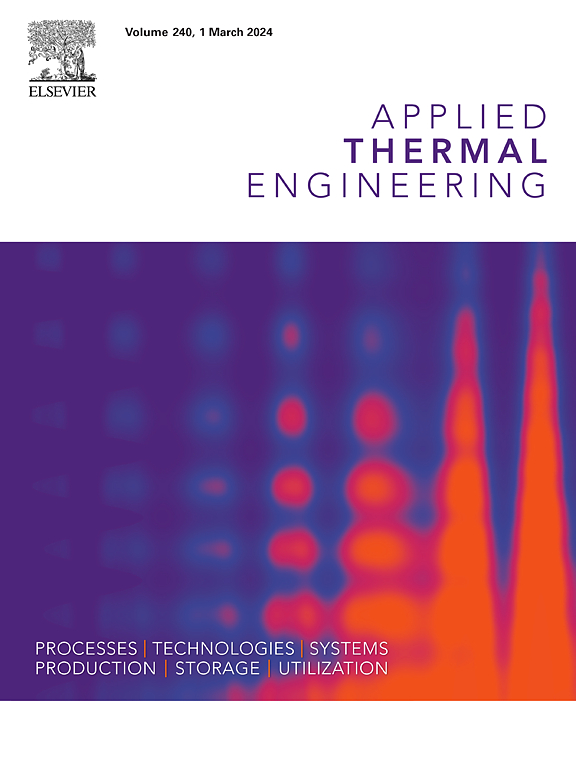The thermodynamic relationship between reducing exergy destruction and improving thermal efficiency in internal combustion engines
IF 6.9
2区 工程技术
Q2 ENERGY & FUELS
引用次数: 0
Abstract
In this study, the effects of various overall equivalence ratios and injection strategies on the heat release rate were conducted adopting the exergy analysis method, and provides a detailed explanation of the thermodynamic relationship between reducing exergy destruction and improving thermal efficiency. The results revealed that exergy destruction during the combustion process is reduced by approximately 400 J, when the overall equivalence ratio decreased from 0.96 to 0.62, and thermal efficiency improved from about 35.0 % to 47.0 %. The equivalence ratio was further decreased to 0.38, the exergy destruction was reduced by 380 J, while the thermal efficiency was only marginally improved by less than 2 %. This indicates that the relationship between the reduction of exergy destruction and thermal efficiency is not linear. In addition, the indicated thermal efficiency can be improved by reducing the overall equivalence ratio and utilizing two-injection. The method of reducing the overall equivalence ratio changes the high-temperature stratification of the heat release, leading more mixture to enter the lean high-temperature area for reaction, while reducing the exergy destruction, which is a way to optimize the combustion “quality”. The two-injection approach modifies the equivalence ratio stratification, allowing more mixture to reach the low equivalence ratio region, where the thermomechanical exergy (It represents the work potential of the combustion process) released per unit volume of the mixed gas is high, and the exergy destruction increases, which is a method to increase the “quantity” of thermomechanical exergy. Therefore, reducing exergy destruction is a sufficient and unnecessary condition for improving thermal efficiency.
内燃机中减少火用破坏与提高热效率的热力学关系
本研究采用火用分析方法,研究了不同的总当量比和注入策略对放热速率的影响,详细解释了减少火用破坏与提高热效率之间的热力学关系。结果表明,当总当量比从0.96降低到0.62时,燃烧过程中的火用损失减少了约400 J,热效率从约35.0%提高到47.0%。等效比进一步降低至0.38,火能损失减少380 J,热效率仅略微提高不到2%。这表明火能破坏的减少与热效率之间不是线性关系。此外,降低总当量比和利用二次喷射可以提高指示热效率。降低总当量比的方法改变了放热的高温分层,使更多的混合气进入贫高温区进行反应,同时减少了火用破坏,是优化燃烧“质量”的一种方式。双喷法修正了等效比分层,允许更多的混合物到达低等效比区域,此时单位体积混合气体释放的热力能(表示燃烧过程的功势)较高,且火用破坏增加,是一种增加热力能“量”的方法。因此,减少火用破坏是提高热效率的充分和不必要的条件。
本文章由计算机程序翻译,如有差异,请以英文原文为准。
求助全文
约1分钟内获得全文
求助全文
来源期刊

Applied Thermal Engineering
工程技术-工程:机械
CiteScore
11.30
自引率
15.60%
发文量
1474
审稿时长
57 days
期刊介绍:
Applied Thermal Engineering disseminates novel research related to the design, development and demonstration of components, devices, equipment, technologies and systems involving thermal processes for the production, storage, utilization and conservation of energy, with a focus on engineering application.
The journal publishes high-quality and high-impact Original Research Articles, Review Articles, Short Communications and Letters to the Editor on cutting-edge innovations in research, and recent advances or issues of interest to the thermal engineering community.
 求助内容:
求助内容: 应助结果提醒方式:
应助结果提醒方式:


